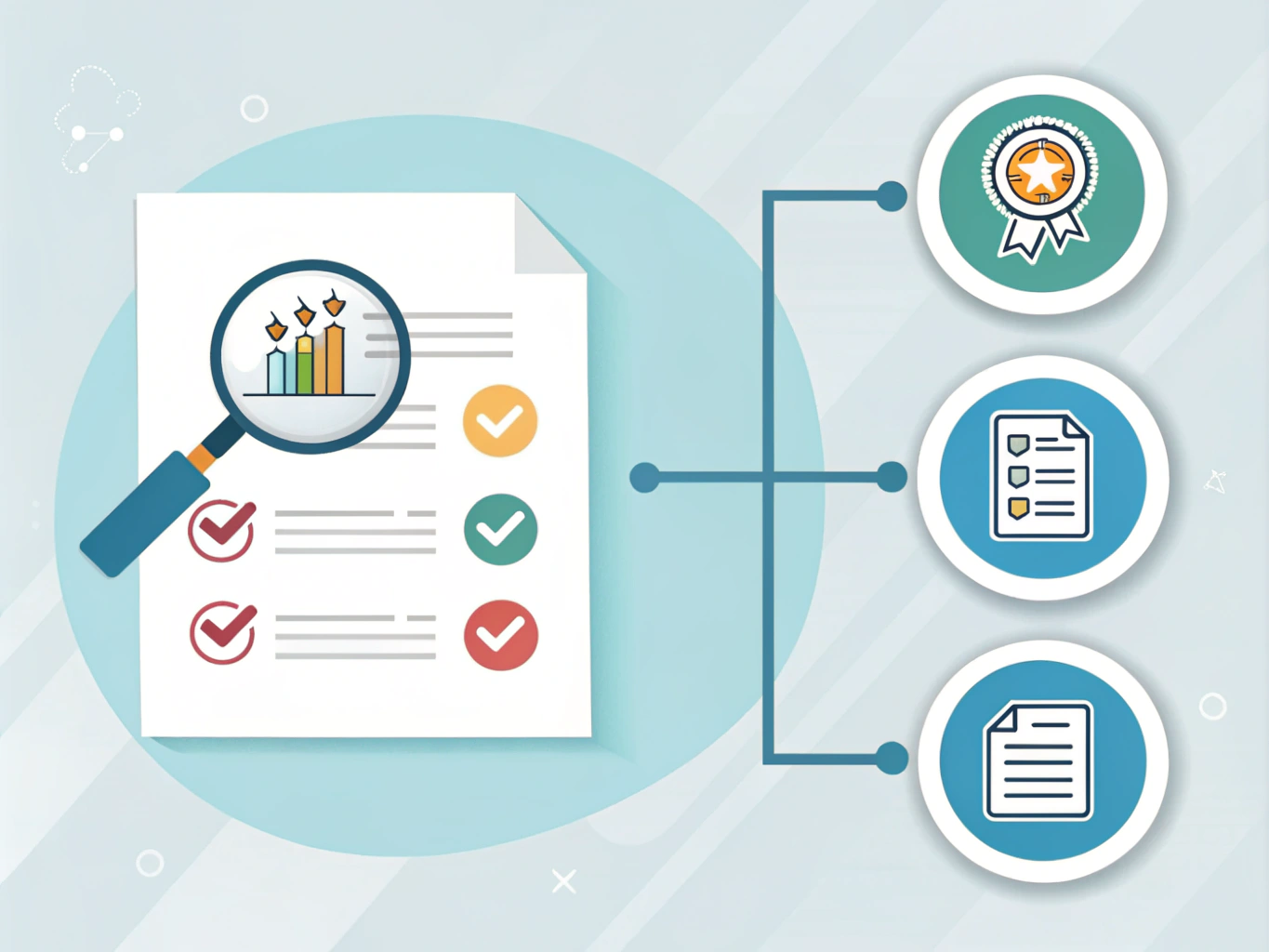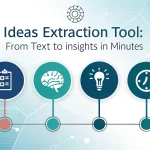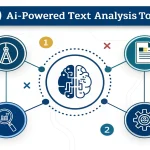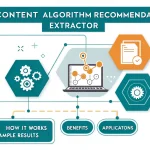Reference Extractor
Is this tool helpful?
How to Use the Reference Extraction Tool Effectively
Our Reference Extraction Tool is designed to simplify the process of identifying and listing references to various sources of learning from a given text. Here’s a step-by-step guide on how to use this tool effectively:
- Enter your content: In the provided text area, paste or type the content from which you want to extract references. This could be a book review, an essay, a research paper, or any other text that contains mentions of art, stories, books, literature, papers, or other sources of learning.
- Click “Extract References”: Once you’ve entered your content, simply click the “Extract References” button. The tool will process your input and generate a list of extracted references.
- Review the results: The extracted references will appear in a bulleted list below the input form. Each reference will be concisely described in no more than 15 words.
- Copy the results: If you’re satisfied with the extracted references, you can easily copy them to your clipboard by clicking the “Copy to Clipboard” button.
For example, you might input a paragraph like this:
“In his groundbreaking work ‘The Structure of Scientific Revolutions,’ Thomas Kuhn challenged traditional views of scientific progress. This book, along with Karl Popper’s ‘The Logic of Scientific Discovery,’ fundamentally altered our understanding of how science advances. For a more poetic perspective on knowledge, one might turn to T.S. Eliot’s ‘Four Quartets’ or Jorge Luis Borges’ short story ‘The Library of Babel.'”
The tool would then extract and list references such as:
- The Structure of Scientific Revolutions by Thomas Kuhn
- The Logic of Scientific Discovery by Karl Popper
- Four Quartets by T.S. Eliot
- The Library of Babel by Jorge Luis Borges
Another example input could be:
“From Shakespeare’s ‘Hamlet’ to Gabriel García Márquez’s ‘One Hundred Years of Solitude,’ literature has always grappled with the human condition. In the realm of science, works like Stephen Hawking’s ‘A Brief History of Time’ and Richard Dawkins’ ‘The Selfish Gene’ have brought complex concepts to a wider audience. Meanwhile, in philosophy, Plato’s ‘Republic’ continues to influence political thought to this day.”
The tool would extract references such as:
- Hamlet by William Shakespeare
- One Hundred Years of Solitude by Gabriel García Márquez
- A Brief History of Time by Stephen Hawking
- The Selfish Gene by Richard Dawkins
- Republic by Plato
Understanding the Reference Extraction Tool: Definition, Purpose, and Benefits
The Reference Extraction Tool is a sophisticated text analysis utility designed to automatically identify and list references to various sources of learning within a given text. Its primary purpose is to streamline the process of compiling bibliographies, creating reading lists, or simply keeping track of the diverse sources mentioned in a piece of writing.
Definition
At its core, the Reference Extraction Tool is an intelligent text parsing system that uses advanced natural language processing (NLP) techniques to recognize and extract mentions of art, stories, books, literature, papers, and other sources of learning from any given content. It’s capable of understanding context and identifying references even when they’re not explicitly formatted as citations.
Purpose
The main purposes of this tool include:
- Simplifying the process of creating bibliographies for academic papers
- Assisting researchers in quickly identifying key sources in a field of study
- Helping readers compile reading lists from book reviews or literary analyses
- Aiding content creators in tracking and crediting their sources
- Supporting educators in generating resource lists for their students
Benefits
The Reference Extraction Tool offers numerous benefits to its users:
- Time-saving: Manually scanning texts for references can be time-consuming. This tool automates the process, potentially saving hours of work.
- Accuracy: The tool’s advanced algorithms can catch references that a human reader might miss, especially in longer texts.
- Consistency: The tool applies the same criteria to every piece of text, ensuring consistent reference extraction across multiple documents.
- Versatility: It can handle various types of references, from books and articles to artworks and musical compositions.
- Educational value: By highlighting references, it can help users discover new sources of learning they might not have noticed otherwise.
- Research facilitation: For academics and researchers, it can quickly generate a list of sources to explore further.
- Plagiarism prevention: By making it easier to track sources, it can help writers ensure they’re properly attributing ideas and quotes.
The Benefits of Using the Reference Extraction Tool
The Reference Extraction Tool offers a multitude of benefits that cater to various user needs and scenarios. Let’s delve deeper into these advantages:
1. Enhanced Productivity
One of the primary benefits of this tool is the significant boost it provides to productivity. Manually combing through texts to identify and list references can be an incredibly time-consuming task. The Reference Extraction Tool automates this process, allowing users to extract references from lengthy documents in a matter of seconds. This time-saving feature is particularly valuable for researchers, students, and professionals who regularly work with reference-heavy texts.
2. Improved Accuracy and Comprehensiveness
Human attention can waver, especially when dealing with long or complex texts. The Reference Extraction Tool, however, maintains consistent accuracy throughout the entire document. It’s designed to catch even subtle references that a human reader might overlook. This ensures a more comprehensive list of references, which is crucial for thorough research and proper attribution.
3. Standardization of Reference Formats
The tool presents all extracted references in a standardized format, typically limiting each to no more than 15 words. This consistency in format makes it easier to review, organize, and incorporate the references into bibliographies or further research. It also helps in maintaining a clean, professional appearance in academic or professional documents.
4. Discovery of New Sources
By efficiently extracting and presenting references, the tool can help users discover new sources of information they might not have noticed while reading the text. This can be particularly beneficial for researchers exploring new areas of study or for students looking to expand their knowledge on a topic.
5. Support for Various Content Types
The Reference Extraction Tool is versatile in its ability to identify references across a wide range of content types. Whether you’re working with academic papers, literary reviews, blog posts, or even transcripts of speeches or lectures, the tool can effectively extract references to books, articles, artworks, music, and more.
6. Facilitation of Further Research
By providing a clear, concise list of references, the tool makes it easier for users to identify key sources for further exploration. This can be invaluable in the early stages of research projects, helping to build a solid foundation of source material.
7. Plagiarism Prevention
In academic and professional settings, proper attribution is crucial. By making it easier to track and list all references in a text, the Reference Extraction Tool helps users ensure they’re giving credit where it’s due, thereby reducing the risk of unintentional plagiarism.
8. Enhanced Learning Experience
For students and lifelong learners, the tool can enhance the reading experience by highlighting the network of references and influences within a text. This can lead to a deeper understanding of the subject matter and its place within a broader context of knowledge.
9. Time-Efficient Literature Reviews
When conducting literature reviews, researchers can use this tool to quickly generate lists of relevant sources from review papers or meta-analyses. This can significantly speed up the process of identifying key literature in a field.
10. Support for Content Curation
Content creators, such as bloggers or social media managers, can use the tool to quickly compile lists of resources mentioned in their content. This can be useful for creating “further reading” sections or resource pages for their audience.
How the Reference Extraction Tool Addresses User Needs and Solves Specific Problems
The Reference Extraction Tool has been designed with a deep understanding of user needs and common challenges in dealing with references. Let’s explore how it addresses these needs and solves specific problems:
1. Overcoming Information Overload
In today’s digital age, we’re constantly bombarded with information. When reading lengthy articles or research papers, it’s easy to miss important references. The Reference Extraction Tool solves this problem by systematically identifying and listing all references, ensuring that no valuable source goes unnoticed.
2. Streamlining the Research Process
For researchers and students, gathering sources is a crucial but often time-consuming part of their work. The tool addresses this need by providing a quick way to compile an initial list of relevant sources from review papers or comprehensive articles in their field of study.
For example, if a researcher inputs the abstract of a review paper on climate change, the tool might extract references like:
- The Intergovernmental Panel on Climate Change (IPCC) Fifth Assessment Report
- “Global Warming of 1.5°C” special report by IPCC
- “The Economics of Climate Change: The Stern Review” by Nicholas Stern
This gives the researcher a solid starting point for further investigation.
3. Enhancing Critical Reading Skills
By highlighting the references in a text, the tool helps readers become more aware of the sources and influences shaping the author’s arguments. This addresses the need for developing critical reading skills, especially important for students and academics.
4. Simplifying Bibliography Creation
Creating a bibliography can be a tedious task, especially for longer works. The Reference Extraction Tool simplifies this process by providing a comprehensive list of references that can serve as the basis for a bibliography. While it doesn’t format the references in specific citation styles, it does provide the essential information needed to create proper citations.
5. Facilitating Interdisciplinary Research
When venturing into new fields of study, researchers often need to quickly familiarize themselves with key sources. The tool addresses this need by extracting references from introductory or review texts in the new field, providing a curated list of important works to explore.
6. Supporting Content Verification
In an era of misinformation, it’s crucial to be able to verify the sources of information. The Reference Extraction Tool supports this need by making it easy to identify and check the sources cited in a piece of content.
7. Aiding in Literature Gap Analysis
Researchers often need to identify gaps in existing literature. By extracting references from multiple papers in a field, the tool can help highlight areas where references are sparse, potentially indicating a gap in research.
8. Enhancing Reading Comprehension
For students or general readers, understanding the context and background of a text can greatly enhance comprehension. The tool addresses this need by clearly presenting the sources that inform the text, allowing readers to explore these references for deeper understanding.
9. Supporting Proper Attribution in Content Creation
Content creators, whether they’re writing blog posts, articles, or creating videos, often need to ensure they’re properly attributing ideas and quotations. The Reference Extraction Tool helps solve the problem of missing attributions by clearly listing all references in the content.
10. Facilitating Academic Integrity
For educators and academic institutions, maintaining academic integrity is crucial. The tool supports this by making it easier for students to track and cite their sources, thereby reducing instances of unintentional plagiarism.
Practical Applications and Use Cases of the Reference Extraction Tool
The Reference Extraction Tool has a wide range of practical applications across various fields and scenarios. Let’s explore some specific use cases to illustrate its versatility and utility:
1. Academic Research
In academic settings, the tool can be invaluable for researchers at all levels:
- Literature Reviews: Researchers can use the tool to quickly extract references from review papers, helping to build a comprehensive list of sources for their literature review.
- Dissertation Preparation: Doctoral students can use the tool to ensure they haven’t missed any crucial references in their field of study.
- Grant Proposals: When writing grant proposals, researchers can use the tool to efficiently compile relevant studies that support their proposed research.
For instance, a psychology researcher studying the effects of social media on mental health could input several key review papers into the tool. The extracted references might include seminal works like:
- “Social Media and Depression Symptoms: A Network Perspective” by Aalbers et al.
- “A Systematic Review of the Impact of Social Media on Depression” by Seabrook et al.
- “The Association Between Social Media Use and Depression” by Lin et al.
2. Journalism and Fact-Checking
Journalists and fact-checkers can use the Reference Extraction Tool to:
- Quickly identify sources cited in press releases or reports
- Verify the credibility of sources used in articles or statements
- Compile a list of primary sources for in-depth investigative pieces
For example, a journalist analyzing a political speech could use the tool to extract references to legislation, historical events, or statistical reports mentioned by the speaker.
3. Content Creation and Curation
Bloggers, podcasters, and other content creators can benefit from the tool in several ways:
- Resource Lists: Easily create “further reading” lists for their audience based on the sources mentioned in their content.
- Attribution: Ensure all referenced works are properly credited, maintaining ethical content creation practices.
- Content Ideas: Use the extracted references as inspiration for future content topics or guest expert interviews.
A technology blogger reviewing the latest developments in artificial intelligence could use the tool to extract references to key research papers, books, and industry reports mentioned in their article, providing readers with a valuable resource list.
4. Legal Research
In the legal field, the Reference Extraction Tool can assist in:
- Identifying key cases cited in legal documents or scholarly articles
- Compiling lists of relevant statutes and regulations mentioned in legal analyses
- Ensuring comprehensive citation of sources in legal briefs and memoranda
For instance, a lawyer researching a complex environmental law case could use the tool to extract references to relevant precedents, statutes, and academic articles from a series of law review articles on the topic.
5. Business and Market Research
In the business world, the tool can be used for:
- Extracting references to key studies and reports from industry white papers
- Identifying influential thought leaders and their works in specific business domains
- Compiling lists of relevant case studies mentioned in business strategy documents
A market researcher analyzing trends in e-commerce could input several industry reports into the tool, quickly generating a list of key studies, statistical sources, and influential business books shaping the field.
6. Education and Teaching
Educators can leverage the Reference Extraction Tool to:
- Create reading lists for students based on comprehensive texts or review articles
- Identify key sources to include in course syllabi
- Teach students about the importance of proper citation and attribution
For example, a history professor could use the tool to extract references from a detailed article on World War II, creating a curated reading list for students that includes primary sources, influential historical analyses, and relevant scholarly articles.
7. Library and Information Science
Librarians and information specialists can use the tool to:
- Quickly generate lists of key resources in specific fields to guide acquisitions
- Create subject guides by extracting references from authoritative texts in various disciplines
- Assist researchers in identifying important sources in their areas of study
A librarian tasked with updating the library’s collection on renewable energy could use the tool to extract references from recent comprehensive reviews in the field, ensuring the library acquires the most relevant and up-to-date resources.
Frequently Asked Questions (FAQ)
Q1: How many references can the tool extract from a single input?
A1: The tool is designed to extract up to 20 references from the given content. This limit ensures that the most relevant and significant references are captured without overwhelming the user with an excessive number of sources.
Q2: Can the tool extract references from any language?
A2: The tool is primarily designed to work with English text. However, it can recognize references to works in other languages if they are mentioned within English content.
Q3: Does the tool provide full bibliographic information for each reference?
A3: The tool extracts and presents concise references, typically limited to 15 words or less. While it doesn’t provide full bibliographic details, it gives enough information for users to easily locate the full reference if needed.
Q4: Can the tool distinguish between different types of references (e.g., books, articles, websites)?
A4: Yes, the tool is designed to recognize various types of references, including books, articles, papers, artworks, and other sources of learning. However, it presents all references in a uniform format rather than categorizing them.
Q5: How does the tool handle repeated references to the same source?
A5: The tool is designed to list each unique reference only once, even if it appears multiple times in the input text. This helps to avoid redundancy in the output.
Q6: Can I use this tool for commercial purposes?
A6: The usage rights for this tool depend on the specific terms of service of the platform or website where it’s hosted. Always check the applicable terms of use before employing the tool for commercial purposes.
Q7: How does the tool handle references with multiple authors?
A7: The tool typically includes the first author’s name in the extracted reference. For works with multiple authors, it may use formats like “Smith et al.” to indicate additional authors while staying within the 15-word limit.
Q8: Can the tool extract references from PDFs or other document formats?
A8: The tool is designed to work with plain text input. To extract references from PDFs or other document formats, you would need to copy and paste the text content into the input field.
Q9: How does the tool handle non-traditional sources like social media posts or personal communications?
A9: The tool is primarily designed to recognize traditional sources of learning such as books, articles, and papers. It may not consistently capture references to non-traditional sources like social media posts or personal communications.
Q10: Can I integrate this tool into my own website or application?
A10: The integration capabilities depend on how the tool is provided. If it’s offered as an API or embeddable widget, integration might be possible. Check with the tool’s provider for specific integration options and requirements.
Important Disclaimer
The calculations, results, and content provided by our tools are not guaranteed to be accurate, complete, or reliable. Users are responsible for verifying and interpreting the results. Our content and tools may contain errors, biases, or inconsistencies. We reserve the right to save inputs and outputs from our tools for the purposes of error debugging, bias identification, and performance improvement. External companies providing AI models used in our tools may also save and process data in accordance with their own policies. By using our tools, you consent to this data collection and processing. We reserve the right to limit the usage of our tools based on current usability factors. By using our tools, you acknowledge that you have read, understood, and agreed to this disclaimer. You accept the inherent risks and limitations associated with the use of our tools and services.







